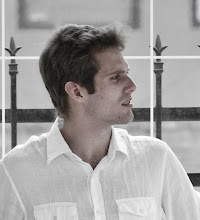
Since seeing 2004’s Man on Fire, I’ve been an ardent admirer of director Tony Scott’s films. In particular, his post-millennial work that exhibits a fascinating synthesis of hyper-kinetic formalism and near art-house experimentalism. Some films have been more effective than others (last year’s Taking of Pelham 123 was a low-point, marred by excessive violence and profanity) but his latest, Unstoppable, is one of the best illustrations of his talent: using a cutting edge aesthetic to tell a timeless tale.
Frequent collaborator Denzel Washington stars as Frank, a veteran train engineer and proud father of two daughters working their way through college. He’s paired with Will (Star Trek’s Chris Pine), a rookie conductor whose temper has sent him through a series of short-lived jobs and placed him in the midst of marital estrangement. But their banter and inevitable camaraderie isn’t the film’s sole focus, even though it represents the majority of the two actors’ respective screen time. Rather, the driving force of the film is an unmanned train carrying hazardous material hurtling through the Pennsylvania countryside. After a series of ineffective attempts to sideline the runaway train by corporate-issued mandates, Frank and Will realize they’re the only people who can stop the train.
In an age where our cinematic heroes seemingly need to be comic book inspired guardians, conflicted cops / soldiers or Jason Bourne mega-men, Unstoppable is refreshingly down to Earth when it comes to heroism. Frank and Will are not genetically mutated or born with supernatural powers. Instead they are flawed, recognizable human beings who acknowledge an impending disaster and leverage their trade skills and industry knowledge, along with a palpable dose of bravery, to avoid it, even though it means putting their lives on the line for a greater good. Their heroism is all the more poignant and inspirational because of their fundamental humanness. Unstoppable is perhaps the most humanist action movie of the past decade.
It’s not a physically demanding role for either Denzel Washington or Chris Pine as the majority of their time on screen requires them to be seated. They aren’t given much room to showboat verbally either as they are handed appropriately demotic dialogue. Yet they manage to make their characters engaging and their situation engrossing purely because they are both strong actors. It’s a testament to their talent that they can do so much in an action movie that gives them so little to do.
The film is shot with Scott’s trademark flair but it all looks realistic and does not bare the blemish of overdone CGI. Of course Scott’s camera roves without traditional reason, but it conveys the length of conference rooms, the confined bubble of an engine room and the slithering mass of train cars in a masterful way that gives you the whole picture without multiple camera setups or traditional cutting rhythms. Given society’s obsession with nanotechnology and ever diminishing gadgets, it’s remarkable to see a film that respects the physical mass and immense weight of massive machinery. With a simple story and a simple visual style (at least for Scott), Unstoppable embodies exactly what a modern, enjoyable, socially conscious action/adventure should be.







